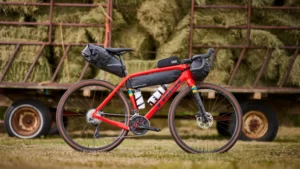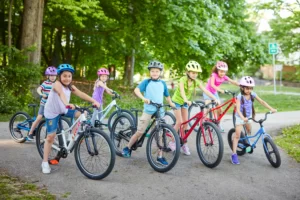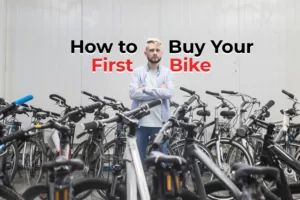If you’ve ever hopped on a bike and thought, “Why does this one feel totally different?”, chances are the handlebars had something to do with it.
Handlebars aren’t just there to steer, they affect your riding posture, your comfort level, and how much control you have. Some give you speed and power. Others are all about relaxing and enjoying the ride. And with so many types out there, it can be hard to figure out which one suits your style.
So here’s a straight-talking guide to the most popular handlebar types, what they feel like in real life, and who they’re best for.
1- Drop Bars
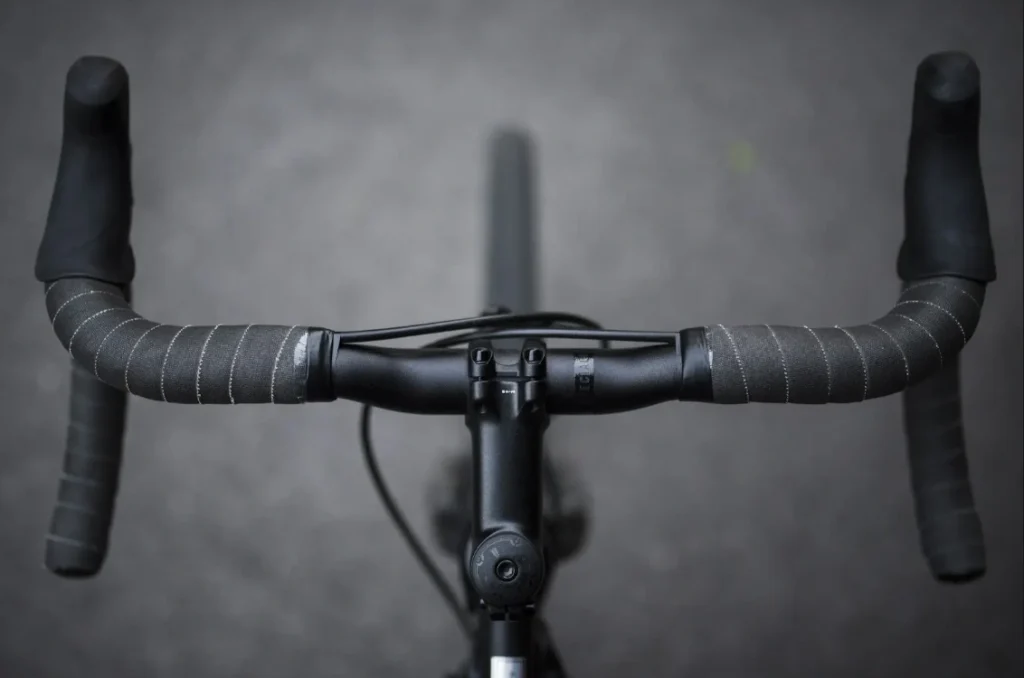
Drop bars are those curved handlebars you see on road bikes, the ones that make you feel like you’re about to win a stage in the Tour de France, even if you’re just riding to the next coffee shop.
What makes drop bars special is how many ways you can hold them. You’ve got the tops for a chill cruise, the hoods (those little rubbery parts by the brakes) for a mix of comfort and control, and then the drops that low part you grip when you’re flying downhill or pushing hard into the wind.
What it feels like:
Fast. Tucked in. Like you’re cutting through the air. It gives you that pro-cyclist vibe, even if you’re just riding solo on a quiet road.
Why riders love them:
Multiple hand positions = less fatigue on long rides
More aerodynamic = more speed with less effort
Great for climbing, sprinting, or just riding long distances
But here’s the thing:
If you’re not used to them, drop bars can feel a bit aggressive. You’re leaning forward more, which can bug your back or neck if you’re not flexible or if you’re just not into that “go fast” posture.
2- Flat Bars
Flat bars are what you’ll find on most basic bikes hybrids, fitness bikes, even some mountain bikes. They’re straight, wide, and easy to get used to, which is probably why most people feel comfortable with them from day one.
I personally think flat bars are perfect if you’re just riding around the city, commuting to work, or going on relaxed weekend rides. You sit upright, which is great because you can actually see what’s happening around you with no awkward neck strain like with drop bars.
What it feels like:
- They’re great for control, especially in traffic.
- You feel balanced, stable, and confident.
- Not a lot of hand positions though, so on longer rides your wrists might start complaining.
If you don’t care about being aerodynamic and just want something that feels “normal” flat bars are it.
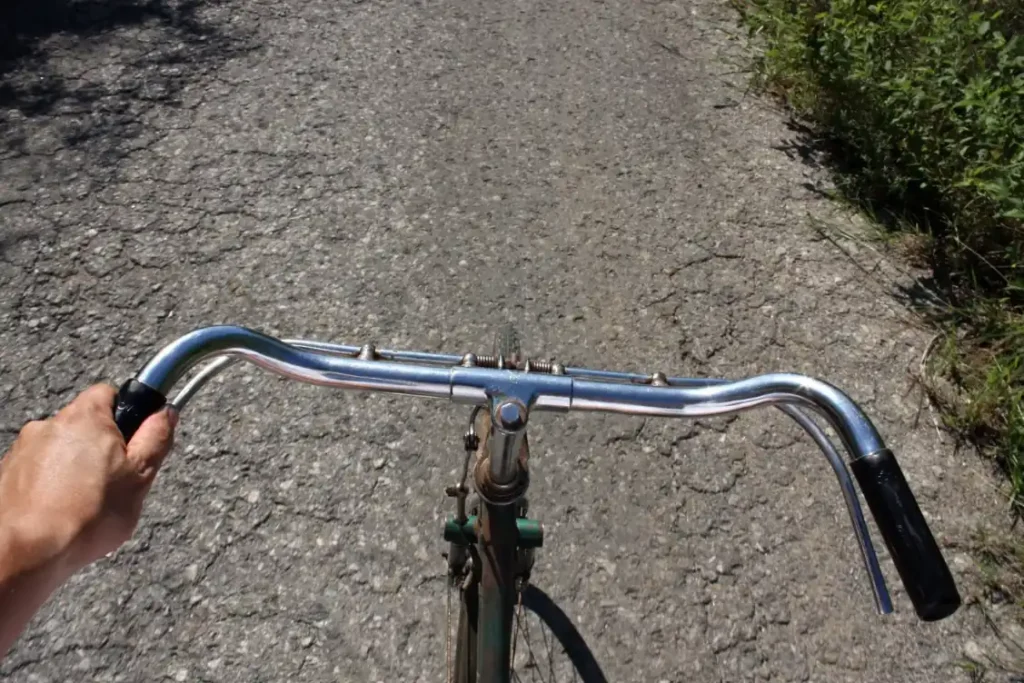
3- Riser Bars
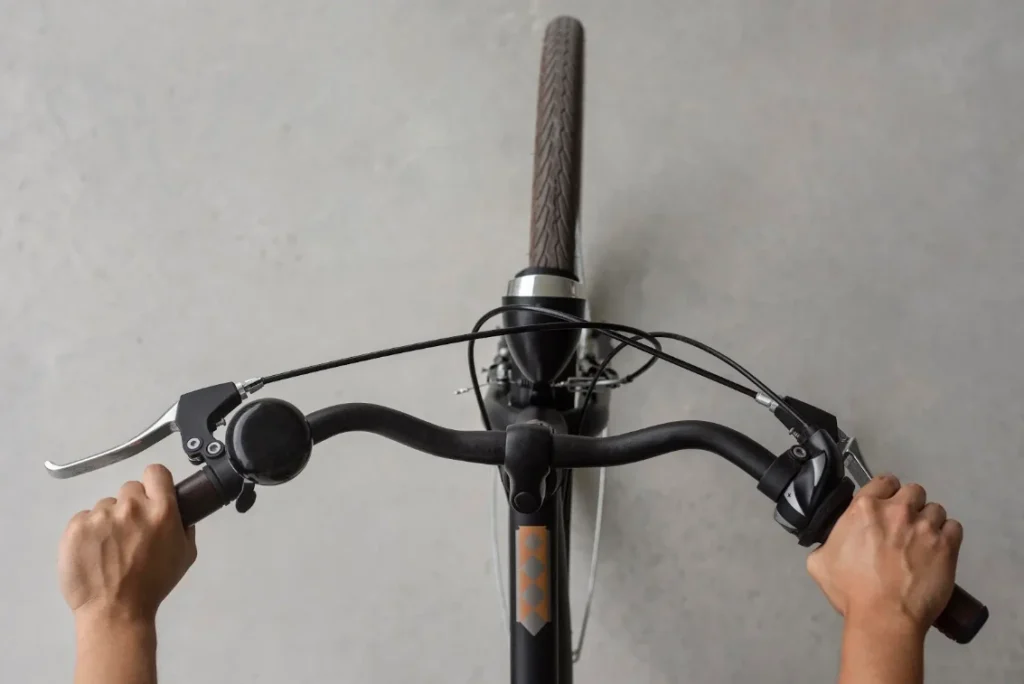
Riser bars are kind of like flat bars with a little more attitude. They’re slightly curved upward and sometimes swept back, which means your hands sit a bit higher and closer to your body. This makes a huge difference if you’re riding trails or bombing down hills.
I switched to risers on my trail bike and immediately felt the difference. You feel more in control when things get bumpy, and your upper body doesn’t get as beat up after an hour on rough terrain. They’re especially good if you like a more upright, relaxed posture but still want to tackle uneven ground.
What it feels like:
- Great for technical terrain, you feel planted.
- Easier on the wrists and shoulders.
- Perfect if you’re into mountain biking or even chill trail rides.
But yeah, they’re not for everyone. If you’re riding fast on paved roads, risers might feel a bit too relaxed and wide, not ideal if you’re trying to cut through traffic quickly.
4- Bullhorn Bars
Bullhorn bars are what you get when you want that stripped-down, fast feel without going full-on roadie. They curve forward like a pair of horns (hence the name), and they’re super popular on fixed-gear bikes.
What they feel like:
Like you’re always ready to sprint. Seriously you lean slightly forward, and you just feel faster. That aggressive riding position helps when you’re pushing hard or trying to beat a red light.
Why some riders swear by them:
- They give you solid leverage for climbing or sprinting
- They look clean and minimalist
- Great if you like a fast, urban vibe with no extra fluff
Heads-up though:
They’re not built for long rides. There aren’t a ton of hand positions, so your wrists might get sore after a while. And if comfort is your thing, these probably won’t be.
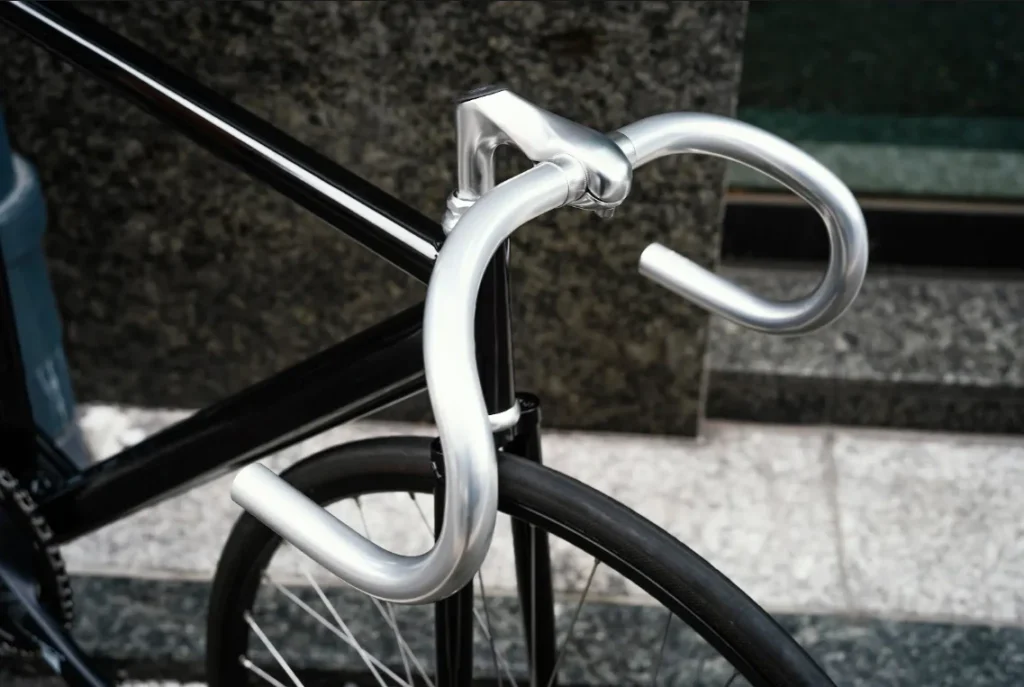
5- Aero Bars (Tri Bars)
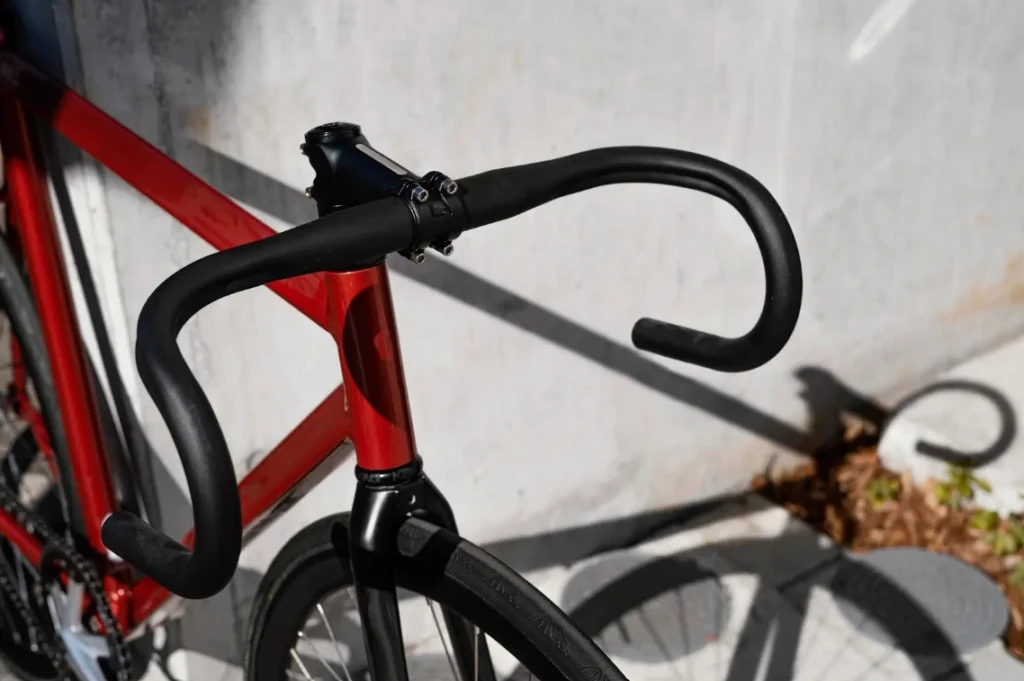
The main goal of aero bars is to lessen wind resistance. Gripping those long extensions like you’re piloting a jet, you lean forward and rest your arms on the pads.
What they feel like:
locked up. You’re exhausted, totally concentrated, and cutting through the wind like a pro. It’s not the most social or scenic riding style, but if you’re racing, it gets the job done.
Why they’re used:
- Perfect for triathlons or time trials
- Keeps you tucked and aero for long stretches
- Boosts efficiency on flat, open roads
But keep this in mind:
They’re not great for everyday riding. Turning can feel awkward, and you definitely don’t want to use them in stop-and-go traffic. City riders, skip these.
6- Cruiser Bars
Cruiser bars are the kind that sweep way back toward you, so you can sit upright and relax. You’ll see them on beach cruisers and comfort bikes, basically any ride that’s more about enjoying the moment than breaking a sweat.
What they feel like:
Like you’re gliding. Your back’s straight, your arms are relaxed, and it’s all super low-effort. Perfect for slow spins through the park or along the corniche.
Why people love them:
- Easy on your wrists, back, and shoulders
- Super beginner-friendly
- Feels more like “cruising” than “cycling”
Downsides?
They’re not built for speed. And if you hit a hill, you’ll feel it has no leverage, no momentum. But for flat, slow rides, they’re perfect.

7- Butterfly Bars (a.k.a. Trekking Bars)
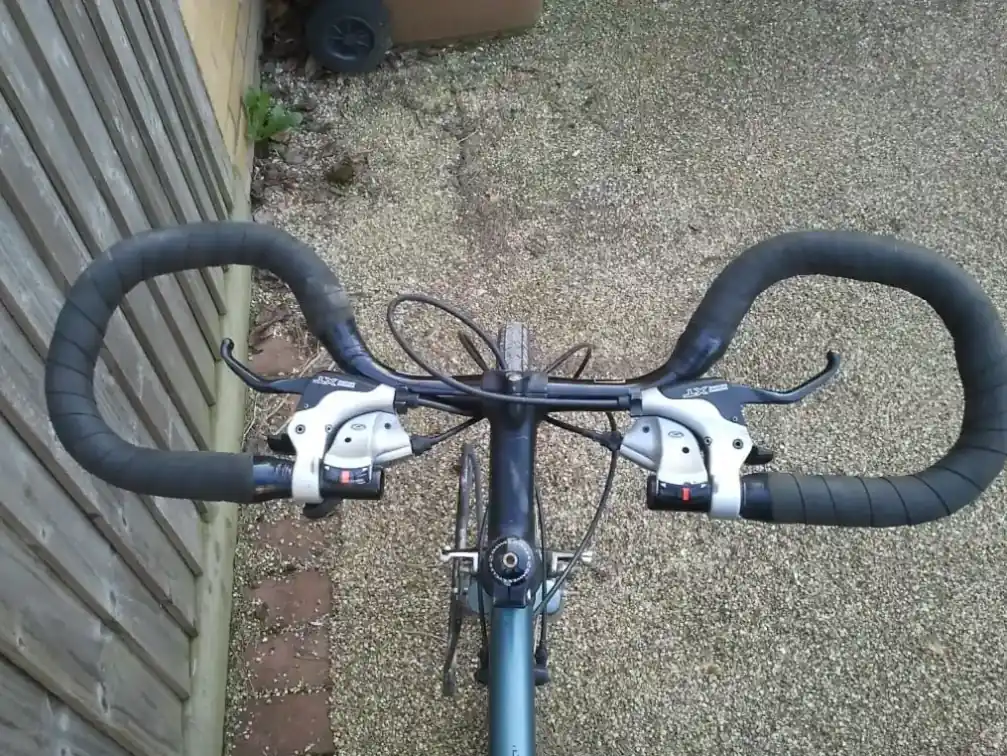
Butterfly bars look… well, kind of weird at first. They loop around in a big figure-eight, and there’s a reason for that they’re designed for people who ride for hours (or even days) and need tons of hand positions.
What they feel like:
Like a touring cockpit. You can move your hands around constantly, which really helps when you’re logging 60+ kilometers a day. They also give you a fairly upright position, so you’re not hunched over the whole time.
Why tourers swear by them:
- Endless grip options = less fatigue
- Great for attaching lights, bags, and gadgets
- Comfortable for slow, steady riding
Downside:
They’re bulky, not exactly stylish, and can look a bit “overbuilt” on smaller bikes. But if you’re riding across a country, you’ll be glad you chose function over fashion.
Finally: What Should You Choose?
The best handlebar for you comes down to two things:
How you ride and what makes your body feel good.
If you love going fast and don’t mind bending forward, go for drop or bullhorn bars. If you ride for fun, comfort, or just to get around, flat or cruiser bars are your best bet. And if you’re doing serious travel or racing the clock, butterfly or aero bars might be what you need.
Don’t be afraid to try different styles, especially if you’re building a custom bike or upgrading your current setup. A good bike handlebar swap can make your ride feel brand new

